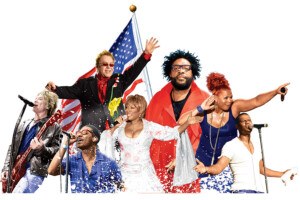Blackness Isn’t Transferable
Francis: Dylann Roof, Rachel Dolezal, and the experience that can't be borrowed.

Dylann Roof, left. Rachel Dolezal, right. (Dolezal photo: AP)
Today marks the 150th anniversary of Juneteenth, the oldest known celebration commemorating the end of slavery in the United States — the day Union soldiers arrived in Galveston, Texas, with the news that slavery ended … some two-and-a-half years after President Lincoln’s Emancipation Proclamation had legally, but not actually, freed slaves across the South.
On June 17, 2015, a terrorist named Dylann Roof walked into Charleston, South Carolina’s Emanuel AME Church, and opened fire, killing nine congregants he’d been praying with during the prior hour. Despite the end of the enslavement period and the current state of the Union, a Confederate flag still flies at full mast outside South Carolina’s state house, undisturbed.
All this, after two weeks of talking about an imposter.
It is now a time to talk about blackness as it really exists for actual black people. More specifically, it is also time to talk about whiteness.
The media has been insatiable about the story of Rachel Dolezal, a white woman who has spent better part of the last decade “identifying” as a black person, and with the black experience in this country. For reasons that remain unclear to me, Dolezal has had a captive audience for her insulting minstrelsy, which includes multiple claims of being victimized in hate crimes. These claims are particularly heinous now, as nine actual black people are dead due to of an actual act of racial terror.
For the last two weeks, Dolezal held court because of white fascination about what it means to be black, as though blackness was a members-only club that one may join as long as he or she knows the secret handshake.
Media has so diluted our understanding of blackness the people that black culture represents, that it is portrayed as transferable or something that can be bought. Blackness has become a costume — in part because of the mainstream commercialism of hip hop, seen as a catch-all for Black America. Because commercialism has made black commercial product accessible, blackness is trifled with, to the point that white people believe they can opt in and out of at their discretion. Or convenience.
Dolezal is not the first perpetrator nor the first to make personal gain, though perhaps among the more infamous. Tom Hanks’ reproductive embarrassment “Chet Haze” also wants anyone who will listen to know that he’s been “accepted” by black people (which he absurdly conflates with hip hop culture, and even that seems unlikely) and freely uses the n-word at his own unapologetic discretion.
They are in good company. President Bill Clinton is often lovingly regarded as “the first black president,” a line from a 1998 New Yorker piece by Toni Morrison. Often offered without context, it is taken to mean that Clinton, like Dolezal, has some sort of well-meaning affinity with black people. While that may be true, it does not deny the privilege bestowed on either of them at birth. The privilege that comes from being born white. Something that terrorists like Roof seek to protect and preserve through acts of violence against black people.
“You’re taking over our country,” Roof reportedly said at the time of the massacre.
Dolezal made her connection, in part, through black hair. Clinton’s entry point was the saxophone on Arsenio Hall’s 1990s talk show. Roof made his connection through the sanctity of the black church. Affiliation with and performance of recognized social markers of blackness enables seamless interloping, making the dangerous all the more so.
But black culture is more than music or hair, or even worship. Blackness is not something to be handed as a reward to those who might defy some racial stereotype. It is to be fiercely defended against appropriation. It is the marker of a legacy and lived experience. It is a non-transferable good that has been at the core of a survival of a people who have been persecuted in this country for generations. Black culture has been a safe haven of expression and liberation when black Americans could not find sanctuary.
Emanuel AME Church was built by Denmark Vesey in this tradition at a time when it was illegal to even have a mostly-black congregation. The church soon became the meeting place to plan a slave rebellion. Vesey and other organizers were brought to trial in secret, hung, and the church was burned down by white supremacists. The church rebuilt by Vesey’s sons, and the congregation continued to meet in secret until 1865.
Terrorism and anti-blackness is settled in the very foundation of American history. And it still lives. One-hundred-and-fifty years later, who will come to announce black freedom? And when will black Americans finally get to celebrate it?
Follow Maya K. Francis on Twitter.


